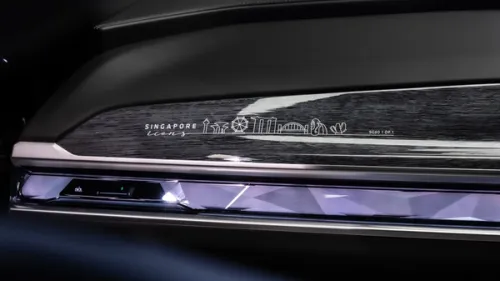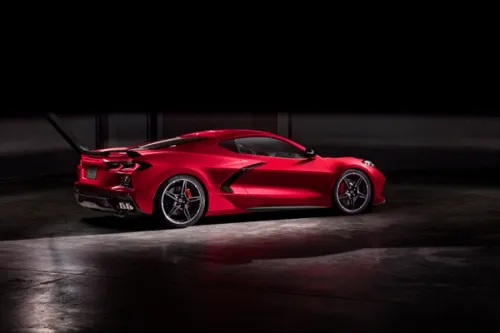What's Holding Electric Vehicle Adoption
Ishan Palit, President & CEO, TÜV SÜD Asia Pacific,addresses the greatest challenges to the widespread adoption of electric-powered vehicles (e-vehicles).

The manufacturing, awareness and usage of e-vehicles has rapidly gathered pace over the last five years, buoyed by the introduction of attractive government incentives and mounting concerns about the future availability of oil and world’s burgeoning carbon footprint. A recent report from Pike Research, for example, predicts a total of 3.2 million electric vehicles and plug-in hybrid electric vehicles will be sold between 2010 and 2015 with a compound annual growth rate of 106%.
These figures are unquestionably impressive and undeniably important, considering 19 percent of global energy use and 23 percent of energy-related carbon dioxide emissions are currently attributable to transportation. But with the world’s automotive services geared towards supporting the 800 million fuel-powered vehicles that currently adorn our roads and escalating concerns from consumers around their practicality, e-vehicles are still some way off becoming a reality.
The potential for e-mobility is tremendous, bearing in mind demand and choice is rising, cost is falling and the target market is getting bigger by the day. However, its successful adoption requires an extra dose of affordability, education and transparency around performance.
The introduction of electric power for on-road vehicles brings a sea change in technology to the automotive sector. High-voltage components, for example, are required not only in engine and battery components but in all of the electronic controls. Unfortunately, such technologies come with potentially lethal risks. Education in high-voltage safety and handling of lithium-ion batteries is therefore imperative for anyone that comes into contact with e-vehicles on a regular basis, including staff at manufacturing plants, consumers, service providers, workshop mechanics and the emergency services.
Proficient training courses in handling such issues are already available in Asia Pacific from accredited third party providers. Adoption however, is severely lagging behind the uptake in electric vehicles. This is due to a lack of awareness and / or shared responsibility from the industry’s major stakeholders and should be tackled collectively through education.
According to Bloomberg New Energy Finance, the price of electric cars is more than three-quarters that of their petrol/diesel counterparts. This is primarily due to the high costs of production of efficient, effective and reliable batteries. Reducing battery prices to levels of economic viability is therefore a primary goal for electric vehicle manufacturers – especially because the more prices fall while fuel prices rise, the more economical e-cars become.
Manufacturing batteries at lower costs, however, has been a significant challenge for battery manufacturers for some time. And while battery technology is slowly advancing, it is unlikely that significant cost reductions will be realised for some years. Immediate solutions must therefore be sought in tandem, the most achievable of which is securing a second life for used batteries and extending their value. This is an area TÜV SÜD has been pioneering in close collaboration with leading e-vehicle manufacturers. At present, for example, we are developing the methodologies for the evaluation of retired batteries with the aim of establishing whether they could potentially be used as energy storage devices in green buildings. In theory, the added value this would bring to batteries would help manufacturers, or even consumers, recoup a significant proportion of their up-front costs.
One of the greatest concerns from consumers regarding e-vehicles is their range (i.e. the distance they can travel without needing to be recharged). A survey of motorists carried out by TÜV SÜD in 2009 revealed that while most people have a positive attitude towards e-mobility, over a third would only consider buying an electrically-powered car if a range of 300 km was guaranteed.
This distance may be achievable by some e-vehicles but they are few and far between and the challenge is consistency, especially during extreme internal and external conditions like low temperatures. In December 2010, we introduced a new standard for determining the range of e-cars, named the TÜV SÜD E-Car Cycle (TSECC), which was the first to take into account such effects. One e-car that was tested was deemed to have a range of 133 kilometres when determined in accordance with the legal test cycle defined in ECE-R101 at 23°C and without additional power consumption. However, when based on the TSECC carried out also at 23 degrees, but at a more realistic speed profile), the same car was revealed to have a range of range just 113 kilometres.
If consumers are going to not only buy but enjoy e-vehicles and increase sales through word of mouth, improved accuracy and transparency around range is imperative. It only takes a few customers to be left stranded tens of kilometres from home with no charging stations in the vicinity to spark outrage. And the consequences of this should not be underestimated. In today’s digital world, everyone has a voice. And one can quickly multiply.
Electric vehicles are our future – they have the potential to appease the world’s appetite for green products and services and more importantly significantly reduce our carbon footprint and our dependence on energy imports. However, the key to their success will be dependent on the diligence and patience of the industry’s major stakeholders. It is not about speed to market, it is about getting it right.
[I]Ishan Palit, President & CEO, TÜV SÜD Asia Pacific[/I]
Credits: wilswong


Get the Best Price for your used car
from 500+ dealers in 24 hours

- Convenient and Hassle-Free
- Consumer Protection
Transparent Process
With No Obligation








